The salmon inspires myth, religion, poetry and the devotion of thousands. Small wonder, as the huge journey it undertakes is one of incredible athleticism and awe-inspiring beauty.
Come autumn, hundreds of rivers in Scotland, Wales and north and south-west England play host to Britain's Atlantic salmon as they migrate from the open ocean upstream to their spawning grounds to breed.
Learn more about this heroic fish, including how to identify them, where they can be seen, what they eat, and how they breed, as well as the challenges they are currently facing in British waters.
Interested in Britain's wildlife? Why not check out our guides to small river fish, kingfishers and herons?
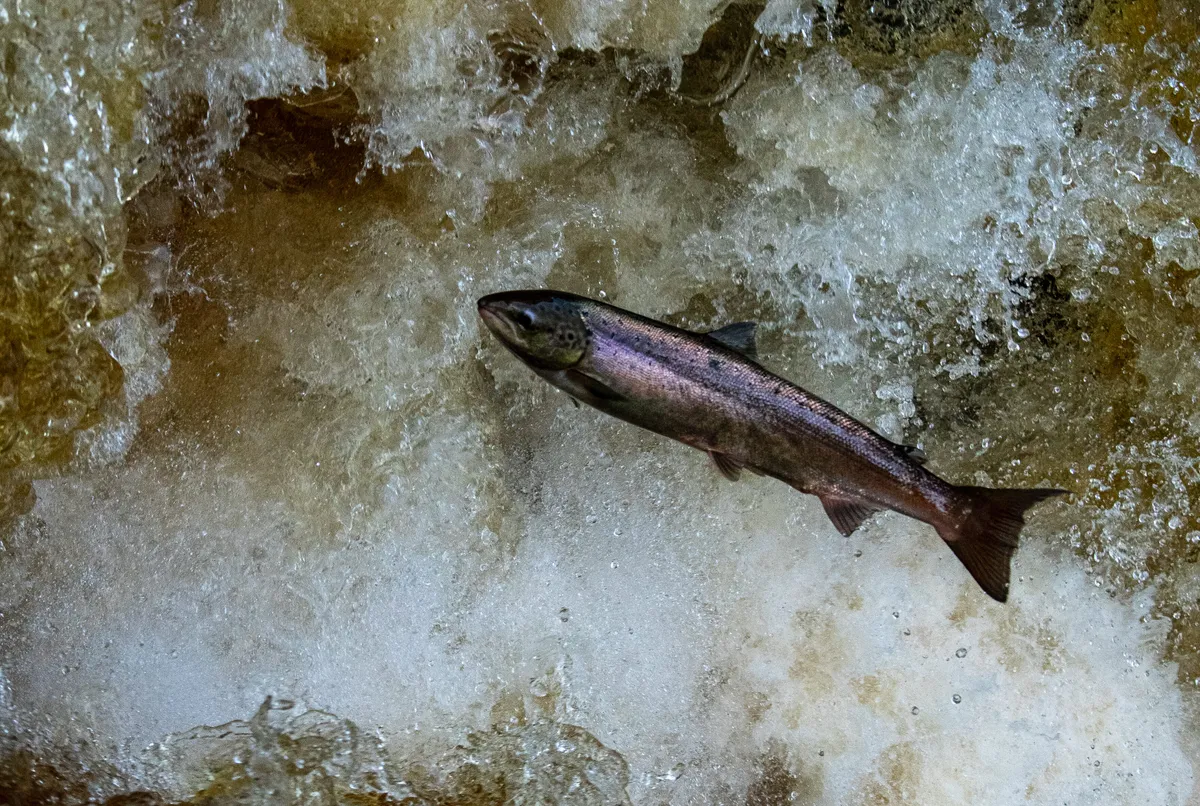
How big are Atlantic salmon?
The average adult Atlantic salmon is between 1.2 and 1.5 metres in length, and can weigh up to 40kg.
The biggest salmon ever caught on rod and line in Britain weighed 64lbs. It was caught by Miss Georgina Ballantine on the River Tay in 1923 and weighed more than half as much as she did!
What's the difference between Atlantic and Pacific salmon?
The Atlantic salmon is native to the rivers on both sides of the North Atlantic, whereas Pacific salmon are mainly contained to the North Pacific waters of the US and Canada.
They have fairly similar lifestyles and movement patterns, but their colouring differs slightly.
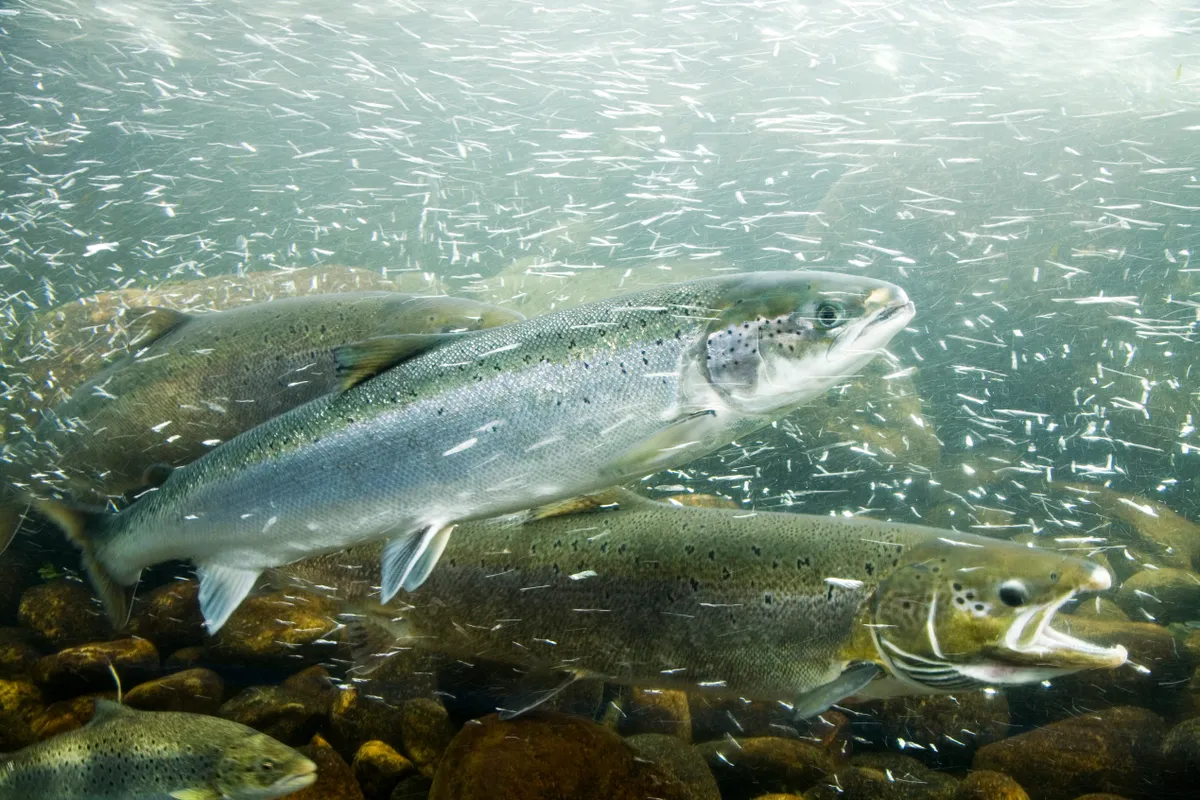
What do salmon eat?
Once a salmon enters freshwater it stops feeding. Salmon that return in spring must survive until the winter to spawn.
In distant and frigid waters, salmon gorge on a feast of capelin, sand eels, small fish and shrimp, growing at a rate that is almost unparalleled in the world of fish.
How long to salmon live for?
The average lifespan of an Atlantic salmon in the wild is up to 13 years.
Where do salmon migrate to and from?
Salmon skin contains magnetite, a magnetic mineral, that may account for their unerring navigational skills.
The Atlantic salmon is anadromous, meaning it breeds in freshwater but migrates to sea to feed and grow. Salmon from the south and west of England and Wales, for example, migrate to the west coast of Greenland. Salmon from the north-east migrate to the farthest reaches of the Norwegian Sea.
Then, after one year or several, they return to the rivers of their birth, forging upstream over waterfalls with that stout-hearted heroism that so captures our imaginations. This is called the salmon run.
At the end of this odyssey Pacific salmon spawn and die; a seemingly pathetic fate after all that effort, until you consider that their decomposing corpses, grown fat with the richness of the sea, fertilise those nursery streams with the nutrients the next generation of salmon needs. 90–95% of Atlantic salmon will die after spawning, though some may return to the sea and go on to spawn again after a couple of years.
What is the salmon run?
The salmon run is the time of year in which salmon return from the sea to freshwater rivers to spawn. The salmon run tends to take place during the autumn, between September and November. Young salmon spend their early years in these rivers and lakes, before heading out to the sea to live out their adult lives and gain body mass. They then will take part in the salmon run, returning to the rivers to reproduce. The salmon run can be an enticing time for predators to pounce on the salmon.
Why do salmon jump?
Atlantic salmon spend most of their time at sea, but return to the rivers or streams where they hatched for breeding time. When they are travelling upstream, they can be spotted jumping over waterfalls or obstacles to reach their breeding areas. They have been known to leap obstacles of more than 3 metres tall in these jumps.
When do salmon mate and reproduce?
Most salmon die after spawning, but a few survive and there is evidence that these fish (‘kelts’) escort the younger fish on the start of their migration.
Most salmon spawning takes place in autumn, with eggs hatching in late winter.
Young salmon are fiercely territorial but can recognise their own siblings by scent and will tolerate them more than salmon to whom they are not related.
Salmon and brown trout are so closely related that they can sometimes hybridise and weirdly, those hybrids can be fertile. This happens more on some rivers than others.
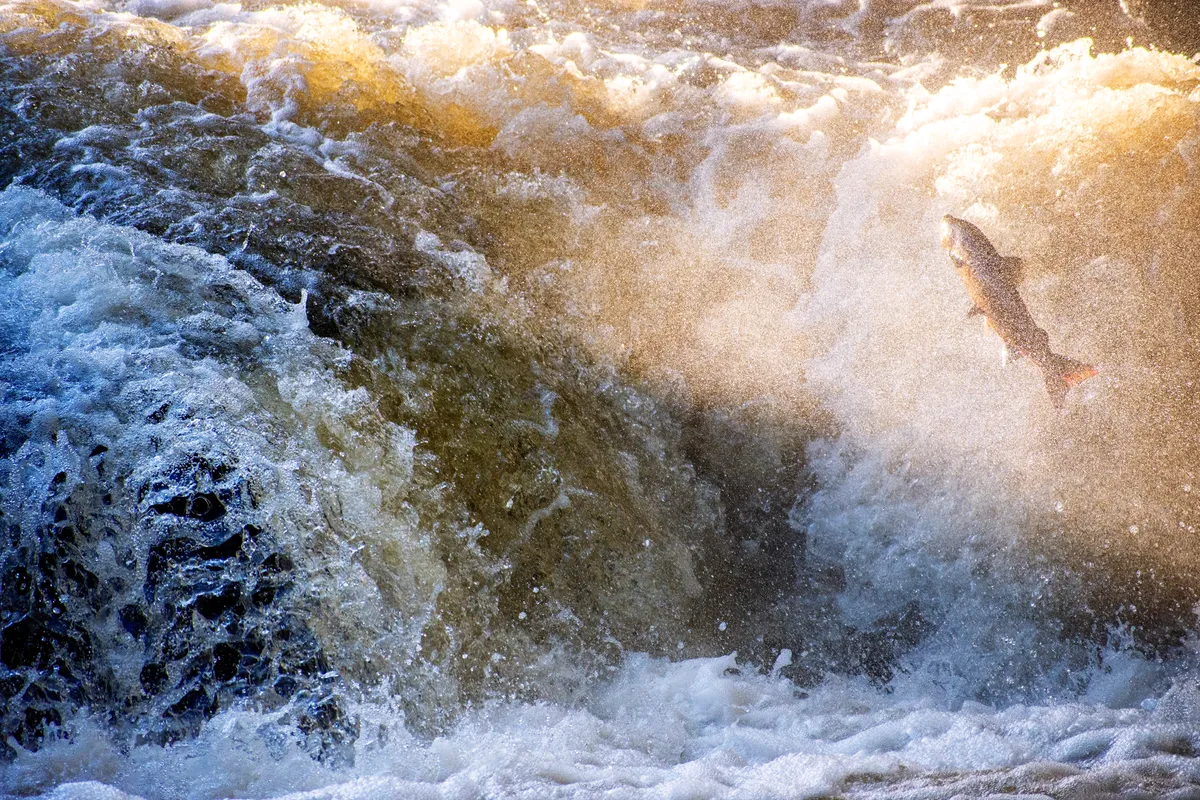
Why are salmon at risk?
Once upon a time, the proto-salmon evolved to take advantage of the abundant food of the sea and the relative safety of freshwater as a place to reproduce. Now, the value that epic migration confers is more ambiguous. The salmon is threatened at all stages of its life cycle and each threat multiplies the risk to the future of the species. Twenty out of the 23 rivers in England that still contain salmon are now judged to be ‘at risk’.
Scientists refer back to the 1960s for a benchmark against which to measure our dwindling populations of salmon. This ground zero is known as ‘pre-fishery abundance’ and dates from a time before the salmon’s feeding grounds in the sea were discovered and pillaged, when there were five times as many salmon in British rivers as there are today. In truth, the salmon has been under threat since the first millennium, or even earlier. That 1960s ‘abundance’ is itself a shadow of what once existed. Salmon would once have been present in every British river, but were almost extinct across the breadth of lowland England before the Middle Ages, shut out by mills and pollution. The priest William Harrison was able to say of the River Thames in 1586 that it was so full of “fat and sweet salmons… as no river in Europe was able to exceed it”. Yet Thames salmon were extinct by 1821, wiped out by the filth produced by the Industrial Revolution.
The impact of pollution on salmon
Today, the curse of industrial pollution for salmon has, to a large extent, receded, but other, more pernicious threats have replaced it. Diffuse pollution – fertilisers, pesticides and agricultural run-off from soil erosion – has a malignant impact on juvenile salmon in apparently pristine, rural streams. Acid rain too; specifically the reaction of acidified rainwater with pine needles from the conifer plantations that cover large parts of upland Britain, which creates spikes of lethally toxic, acidified river water.
Dams, navigations and hydro-schemes continue to shut the door on the migrating adult salmon, something that has been illegal since the 12th century, although the laws have never actually stopped anyone.
Salmon farming
We discovered the salmon’s oceanic feeding grounds in the late 1950s and, for three decades, fished the hell out of the species, drastically reducing the global population. The impact of netting has diminished in recent years largely thanks to the Herculean efforts of the late, great Orri Vigfússon, an Icelandic entrepreneur and conservationist. During the 1990s, he managed to broker moratoria with salmon fishermen of the Faroe Islands and quota and net buyouts from other fishing fleets in the region. Today, there is very little salmon netting in the North Atlantic and the fishermen have been helped to convert to more sustainable alternative activities.
In fishing’s wake has come a new minotaur: salmon farming. Smoked salmon – once a luxury comparable with caviar – is now ubiquitous and inexpensive, but at massive environmental cost. The salmon farms that dot the sea lochs and estuaries of western Scotland create pestilential plagues of sea lice that have wiped out or seriously diminished runs of wild salmon (and sea trout) in those places. Although the technology exists to do things differently, salmon are farmed in ways that would never be tolerated in other, more visible forms of agriculture.
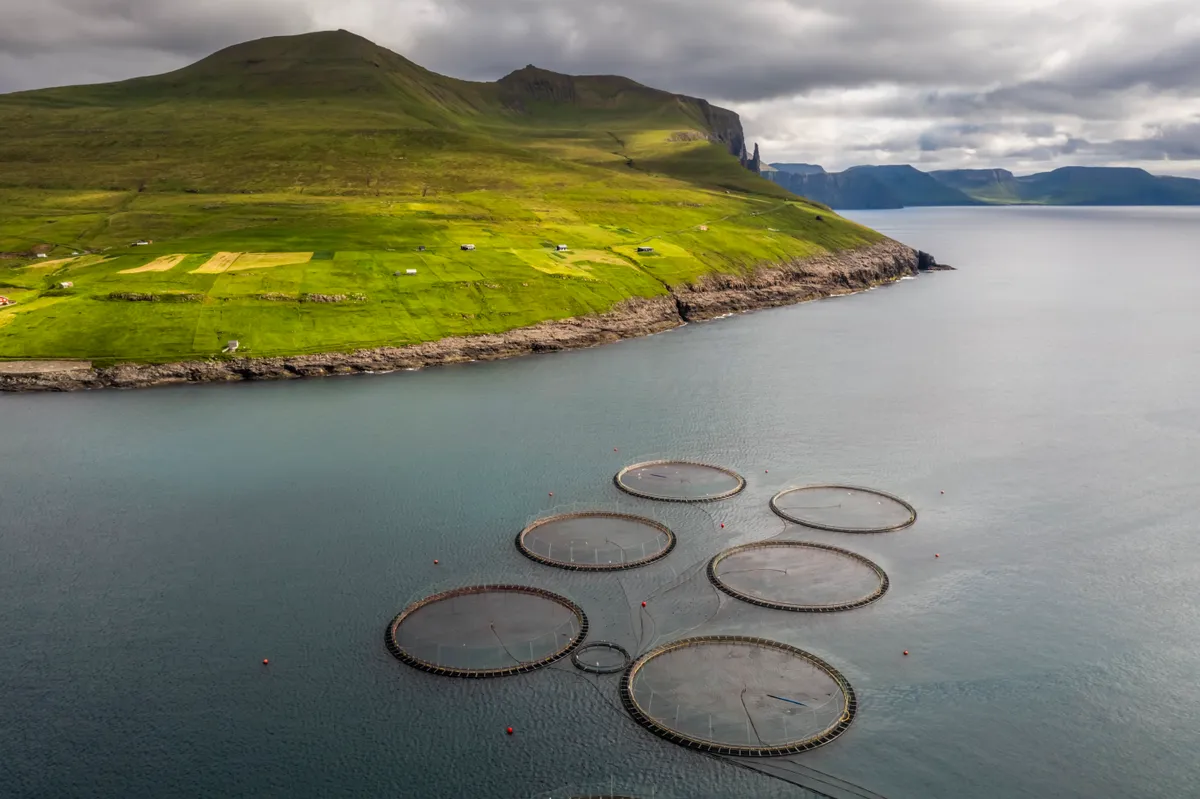
How will climate change affect salmon populations?
As if that weren’t bad enough, one threat – a warming Atlantic – may yet undo our salmon altogether. The temperature of the ocean affects how far the salmon have to travel to find food and how much they find when they get there. When once up to 15% of the young salmon that went to sea survived to return, now that number is more like 4%, and worsening with every passing decade.
In the face of such a decline, is there anything we can do to save the species in Britain? Fortunately, the salmon inspires devotion among rod-and-line fishermen, and they make a small army of conservationists. On the English and Welsh Wye, for example, a band of salmon lovers has in the last decade driven a three-fold increase in the salmon run by knocking down dams, neutralising acidified streams with lime, plus mile after tireless mile of habitat improvements. The best we can do to counter the poor survival at sea is to send as many young fish to sea as possible, at least until mankind finds a way to save itself and the planet from suicide by carbon emissions.
As for the general public, demanding a change to the way salmon are farmed would make a big difference. We should also hold the government to account over its agricultural and fisheries policies. Less soil erosion, less diffuse pollution, better landscape management – these things will all help save the nation’s most ancient resident. Salmon have been present along the south coast of England, which has never been covered by glaciation, since their evolution as a species two million years ago. We ought to make sure they do not disappear under our watch.
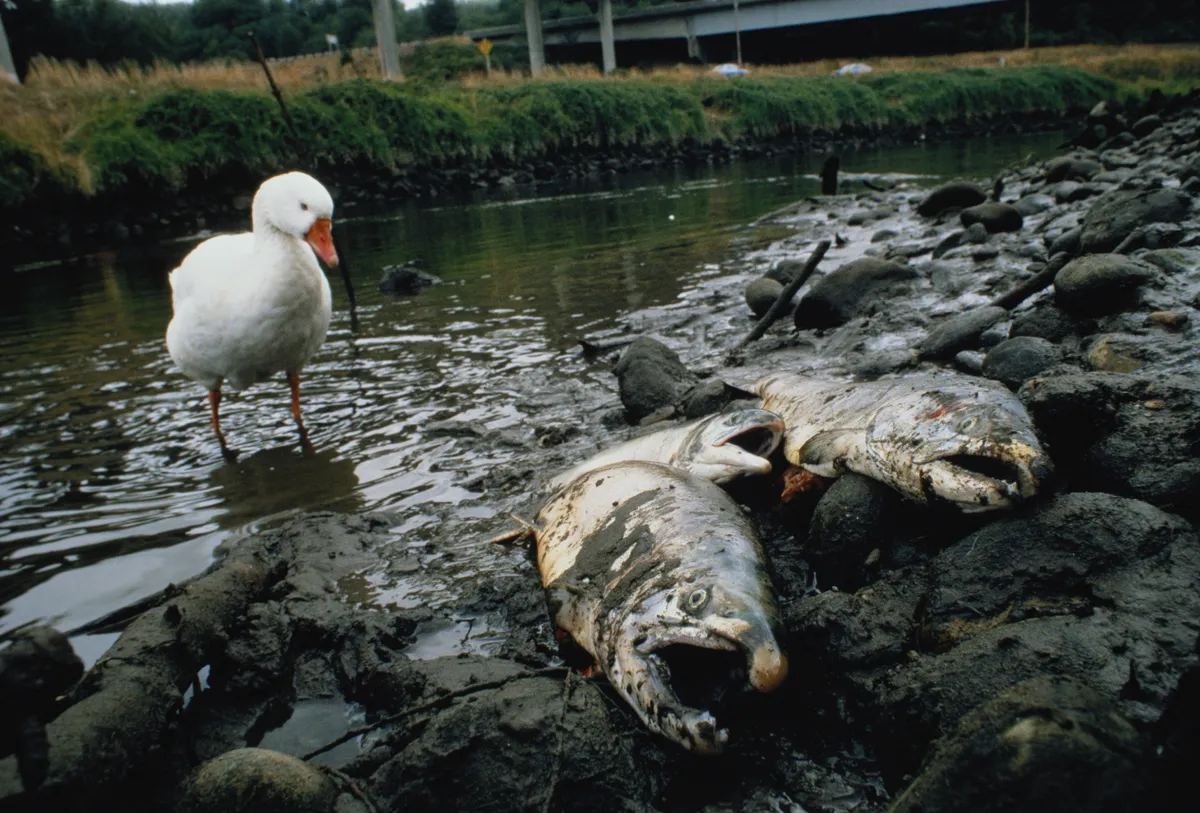
Where to see salmon in the UK?
Atlantic salmon can be found in freshwater rivers in Wales, Scotland and North and South West England.
- Philiphaugh Salmon Viewing Centre, Selkirkshire, TD7 5LX
- Stainforth Force, on the River Ribble, Settle, Yorkshire Dales, BD24 9QD
- Hexham Bridge Salmon Ladder, on the River Tyne, Northumberland
- Linn of Tummel, on the River Tummel, near Pitlochry, Perthshire, PH16 5NP
- Buchanty Spout, on the River Almond, Glenalmond, Perthshire
- Cenarth Falls, on the River Teifi, Pembrokeshire, South Wales
- Falls of Shin Visitors Centre, Achany Glen, Lairg, IV27 4EE
